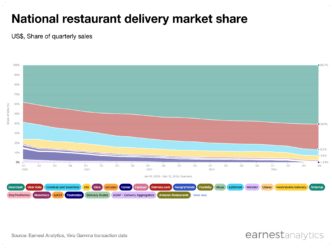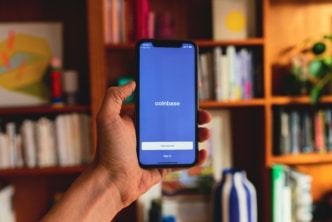Homework on Back-to-School
With the back-to-school (B2S) season now behind us, we took a deeper look at the credit, debit, and ACH records of millions of anonymous U.S. consumers to understand the season’s important role in the retail calendar.
Key Takeaways
- The B2S season is a regionally staggered period due to schools’ varied start dates around the country. The market consists of Athletic, Footwear, Teen and Kids Apparel, and Department Store verticals, which all exhibit meaningfully higher sales volume during this period in the retail calendar.
- Earnest data shows a slowdown in spending this B2S season, with YoY growth decelerating ~2% driven by traffic, while ticket accelerated ~0.5%. Half of the slowdown was driven by a continued decel in the Online channel.
- Athletic retailers continued to outperform this season, accelerating ~1% in aggregate. Kids Apparel struggled to perform, slowing its growth ~4% from its usual modest performance the past few years.
- New customer acquisition is a big driver for B2S spending, however, the average existing B2S shopper is still ~10% to 50% more valuable than a new one.
- Historically, B2S shopping and holiday shopping have shown strikingly similar performance trends, making us wonder if this season’s B2S slowdown in spending is any indicator of performance for the upcoming 2019 holiday season.
Defining the Back-to-School Market
The B2S season occurs at different times in different regions, depending on when school starts. As a result, we defined B2S as a three-week period that is regionally staggered, occurring later in the Northeast than in the rest of the country, due to a later first day of school.
We identified merchants that are most impacted by B2S by looking at what proportion of a merchant’s annual sales occurred over the 3-week B2S period in the past few years. We defined the B2S market as the list of merchants that over-index the expected sales volume (i.e. if every week of the year was equivalent in sales volume, three weeks would represent 5.8% of annual sales). Below is a descending list of the most B2S-sensitive merchants.

Overall Retail Performance
Earnest data shows that the 2019 B2S season’s YoY growth decelerated ~2% overall, driven largely by transactions and unique shoppers. Conversely, average ticket’s YoY growth accelerated ~0.5%. Interestingly, half the deceleration was driven by a slowing Online channel, a continuation of the 2018 B2S season when Online growth began to meaningfully slow in the data.


Diving Deeper
Looking at sector and individual merchant performance, Athletic retailers (FINL, HIBB, VFC, UAA, BGFV, DKS, SPWH) continued to outperform this season, accelerating ~1% in aggregate. Kids apparel (ASNA-Kids, PLCE, LE, CRI) struggled to perform, slowing its growth ~4% from its usual modest performance the past few years.


New vs. Existing Shoppers
We isolated the past four B2S seasons (2016-2019) and cohorted shoppers into two groups:
- New B2S Customers: shoppers who transacted at a given merchant for the first time this B2S season.
- Existing B2S Customers: shoppers who had previously transacted at a given merchant during one of the prior three B2S seasons.
New customer acquisition plays a major role in B2S performance, the extent to which is varied across merchants. ~95% of CROX customers were acquired this B2S season while less than 50% were acquired at TJX-Marmaxx and ROST.

While all merchants rely on acquiring new customers, the value of their existing B2S customers is still higher. The average existing B2S customer spends more than 30% at JWN, TLYS, and ROST relative to a newly acquired one, and ~10% more at CROX, HIBB, and VFC.

B2S: A Leading Indicator of Holiday Spend
We compared trends between the B2S and Holiday periods of the past three years and found that the two periods are highly correlated. Both Panel Sales, Transactions, and Average Ticket show strikingly similar YoY inflections. Begging the question: Will the upcoming holiday season mirror the recent B2S slowdown?












